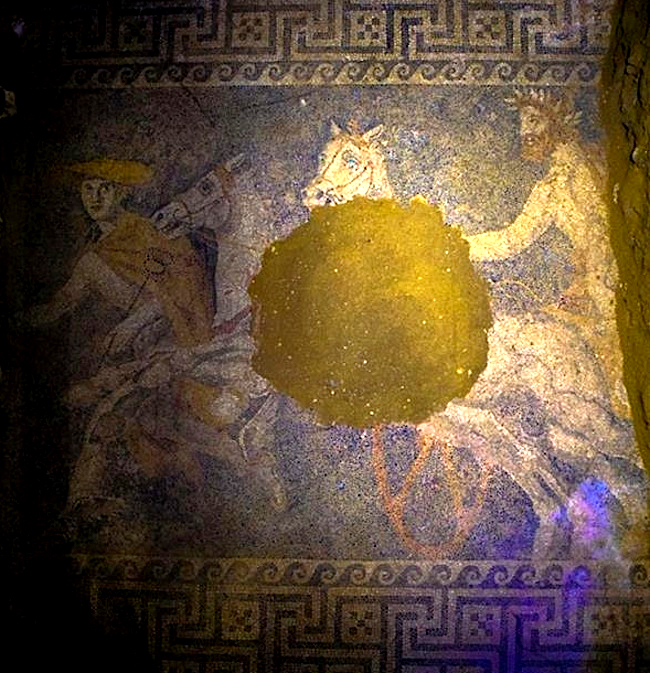The god Hermes leads the chariot of a bearded man wearing laurels toward the underworld, in a stunning mosaic revealed by the Greek Ministry of Culture, recently discovered at the massive 4th Century BC tomb at Amphipolis in Northeast Greece.

The moasic floor was made with pebbles of six different colors, and were enough found in the chamber that archeologists hope to reconstruct the damaged portions before the tomb is opened to public sometime in the future. Almost 15 x 10 feet in size, the mosaic covers the entire floor of the tomb’s second chamber.
Known as the Kasta tomb (Τύμβος Καστάv,) the site has been under careful excavation since its discovery in 2012. It is the largest tomb ever found in Greece at 1,935ft (590m) in width.
Amphipolis was a major navel port during the reign of Alexander the Great. Three of the tomb’s four known chambers have been entered thus far, and it is assumed to have been built for one of Alexander’s close relatives, and possibly his wife.
Alexander died in Babylon in 323 BC, a month before his 33rd birthday. His tomb is said to be in Egypt, but it has never been found. It is possible the site in Amphipolis is actually a cenotaph, a monument to someone buried elsewhere. The many features revealed by archeologists thus far suggest the work of Alexander’s chief architect Dinocrates of Rhodes.
So, it is possible the site is actually an unoccupied monument to Alexander himself, or his father, Philip II, who conquered the region a generation earlier. Before then Amphipolis had been an independent city state, famous for defeating an Athenian invasion some 80 years before it fell before King Philip.
While a recently discovered hole in an inner wall implies it may have been looted in antiquity, it is still hoped they may know for certain just who it was built for, once they enter the fourth chamber. But the site dwarfs Philip’s own tomb in ancient Aigai some 100 kilometers west of Amphipolis. That is but one reason this site is of so much interest.
Other important discoveries at the site include two large sphinxes and even larger caryatids, and recent photos of both can be seen at various websites.